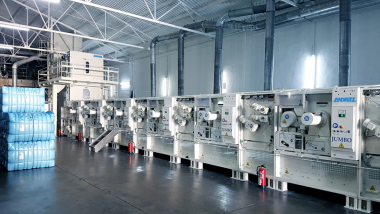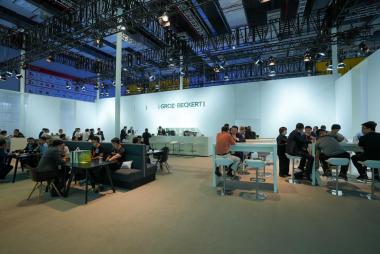India’s Maruti Printing with Baldwin’s LED-UV technology
Maruti Printing transformed its business as the first printer in India to adopt the latest LED-UV curing technology from AMS Spectral UV, a Baldwin Technology Company. The hybrid system, which includes traditional UV modules, has been in production for nearly two years and has significantly expanded the offset printer’s capabilities for its customers, including adding the ability to print on all types of plastic substrates.
Not only does Maruti have the distinction of being an LED-UV trailblazer in India, but it also is first in the market to upgrade a high-speed, high-performance Heidelberg Speed Master 72F+L six-color printer with coating tower—which prints up to 15,000 sheets per hour—with AMS Spectral UV’s high-power AMS XP9-I Series LED-UV and P3 Smart UV curing modules.
Established in 1986 and headquartered in Ahmedabad, Gujarat, Maruti serves customers throughout India, providing offset printing of scratch cards, banners, booklets, brochures, calendars, danglers, pamphlets, posters, stickers and envelopes.
In January 2020, Maruti took delivery of two AMS XP9-I Series LED-UV modules to cure colors in the interdecks. The modules are ideal for the highest-speed curing situations that require consistent peak intensity to the substrate, which is the case for Maruti’s offset printing standard of perfection with every cure.
To cure ink, as well as a growing variety of LED coatings, Baldwin’s AMS Spectral UV modules can be located after print units, or in the press delivery after the coater. When inks and coatings are cured with LED-UV, they become instantly dry via photopolymerization, allowing for printing on any substrate, including plastics and metallized stocks. Plus, work can be immediately finished and sent to the bindery once it comes off the press, without the need for heat, spray powder or drying time.
In addition, Maruti took delivery of two P3 Smart UV curing modules for installation at the end of the press to cure any type of UV coating and expand the company’s scope of coating compatibility to general UV coatings in order to offer its customers the widest range of UV printed choices in the Indian market.
The P3 Smart UV housings are completely liquid-cooled to ensure safe, consistent performance and increased uptime, and modules feature a universal design, so that any unit can fit any print unit location. P3 modules can be changed, inspected and cleaned quickly and easily, without tools, and lamps slide and lock into place smoothly and securely.
The durability of the equipment and its chipset was a critical deciding factor in India’s climate. The latest-generation power-and-control cabinets are dust- and moisture-resistant, allowing them to withstand extreme heat and humidity, as well as powder and airborne contaminants, making the equipment ideal for operation in stressful conditions anywhere in the world. AMS Spectral UV’s latest generation of LED chips, designed for the highest-intensity curing applications, enable the curing of LED inks and coatings at record-setting speeds. They are built with resilient components, and the semi-conductor components are sealed, which allows the chips to work in a variety of rugged environments. Additionally, integrated circuits incorporated into the design electronically protect the LEDs and the entire system.
Baldwin Technology Company / Barry-Wehmiller








